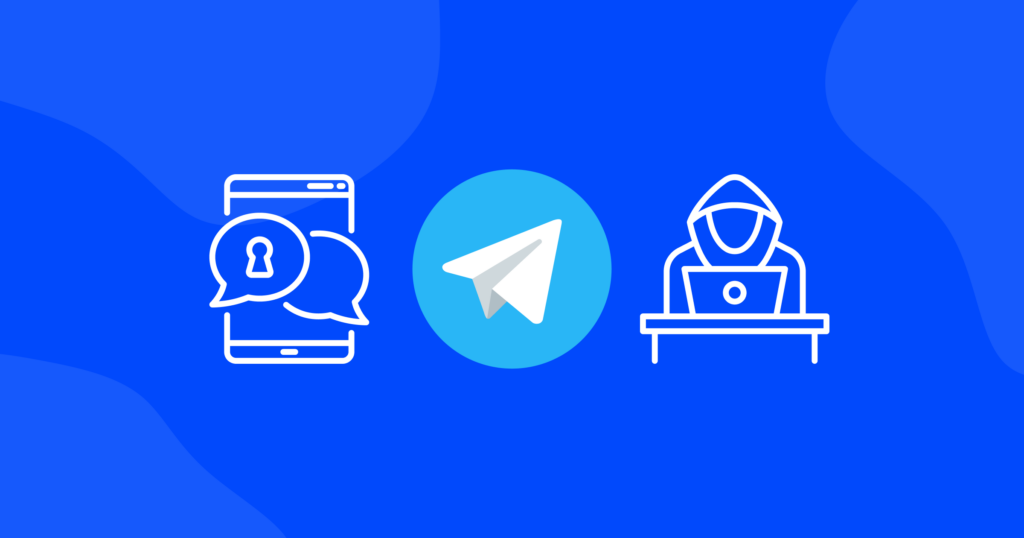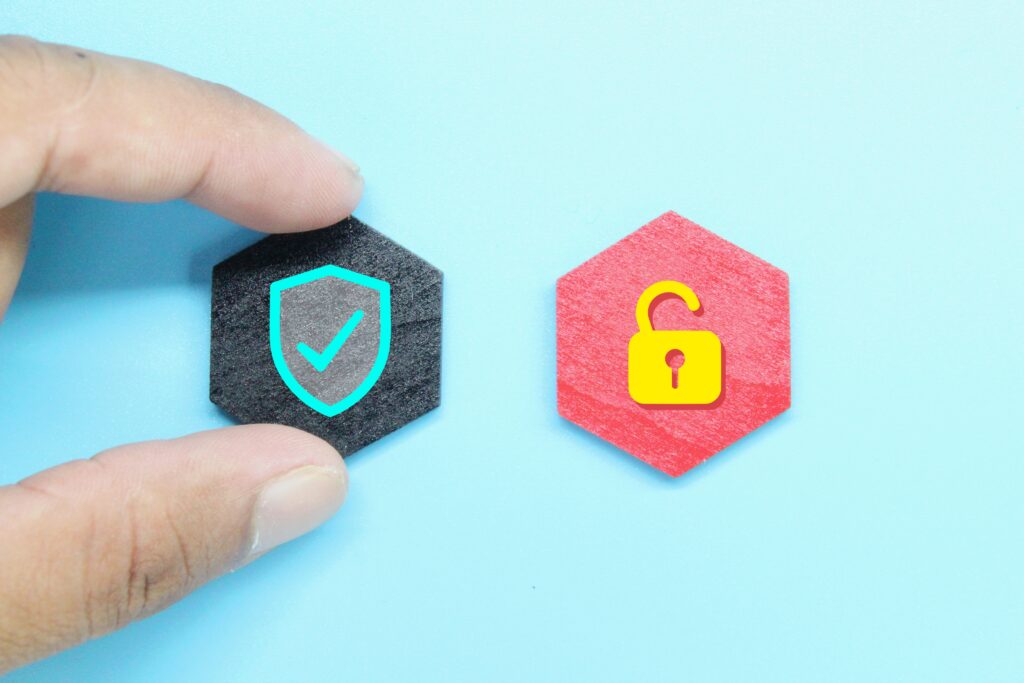

Internet Security Guide for 2024: How to Protect Yourself Online

Internet security refers to the measures taken to protect our online presence from cyber threats such as hacking, malware, and phishing.
In this article, we will explore the topic of internet security, discuss different types of cyber threats, and list the most effective online safety tips for keeping your internet presence secure.
What are the most common internet security threats today?
The digital world is constantly evolving, and with that comes new security threats.
In 2024, some of the most common internet security threats include phishing, ransomware, malware, hacking, cloud computing vulnerabilities, IoT attacks, crypto-jacking, and social engineering.
It’s crucial to stay informed and proactive in protecting ourselves and our devices from these dangers. So, let’s look into each cyber phenomenon more closely.
Phishing
Phishing is a type of social engineering attack that aims to steal sensitive information, such as login credentials or financial information, from unsuspecting victims. It works by tricking individuals into providing their personal information through a fake email, website, or message that appears to be from a trustworthy source.
There are several types of phishing attacks, including:
Email Phishing
A fake email that appears to be from a legitimate source, such as a bank or popular online retailer, is sent to an individual in order to trick them into providing sensitive information or clicking on a malicious link.
Spear Phishing
A targeted phishing attack that specifically targets an individual or organization. The attacker creates a fake email or website that appears to be from a trusted source, such as a colleague or a partner, in order to trick the target into providing sensitive information.
SMS Phishing (Smishing)
A phishing attack sent via text message that appears to be from a trustworthy source, such as a bank or government agency, and requests sensitive information or instructs the recipient to click on a link.
Voice Phishing (Vishing)
A phishing attack that uses voice calls or voicemail messages to trick individuals into providing sensitive information.
The mechanics of phishing involve the attacker creating a fake email, website, message, or call that appears to be from a legitimate source. The victim is then lured into providing their personal information, such as passwords or financial details, which the attacker can use for their own malicious purposes.
It is important to be aware of the dangers of phishing and to take steps to protect oneself, such as being suspicious of unsolicited emails and messages, verifying the authenticity of links before clicking on them, and using strong passwords.
Ransomware
Ransomware is a type of malware that encrypts a victim’s files and demands payment in exchange for the decryption key. The attacker typically demands payment in the form of cryptocurrency, such as Bitcoin, in order to maintain anonymity.
Ransomware operates by infecting a computer or network, usually through a malicious email attachment or a vulnerability in software, and then encrypting the victim’s files. Once the files are encrypted, the attacker displays a ransom message demanding payment in exchange for the decryption key. If the victim refuses to pay or is unable to pay, they risk losing access to their files permanently.
There are several types of ransomware, including:
- Cryptoviral extortion. The most common form of ransomware encrypts a victim’s files and demands payment for the decryption key.
- Screen locker ransomware. Locks the victim’s screen and displays a ransom message, preventing them from accessing their computer.
- Doxware. Threatens to publish sensitive information, such as personal data or company secrets, unless a ransom is paid.
- Mobile ransomware. A type of ransomware that targets mobile devices, such as smartphones and tablets.
- Ransomware-as-a-service (RaaS). A business model where cybercriminals offer ransomware tools and support to other individuals or groups in exchange for a portion of the ransom payments.
In order to protect against ransomware, it is recommended to regularly back up important data, keep software and antivirus programs up-to-date, avoid opening suspicious email attachments or links, and educate oneself and employees on the dangers of ransomware and how to recognize it.
If infected with ransomware, it is advised not to pay the ransom and to seek assistance from a professional cybersecurity firm.
Malware
Malware, short for malicious software, refers to any program or code that is intentionally designed to harm or disrupt a computer system. Malware can infect a computer through various means, including:
- Email attachments: opening an infected attachment from an email can infect a computer with malware.
- Downloading software: downloading software from an untrusted or malicious website can also lead to malware infection.
- Drive-by downloads: browsing an infected website can result in malware being downloaded onto a computer without the user’s knowledge or consent.
- Social engineering: falling for social engineering tactics, such as phishing scams, can lead to malware infection.
Let’s briefly overview the 6 most common types of malware.
- Virus. Replicates itself by attaching to other files or programs.
- Worm. Replicates itself without attaching to other files and can spread rapidly through a network.
- Trojan. Disguises itself as a legitimate program and is used to gain unauthorized access to a computer system.
- Spyware. Collects sensitive information, such as passwords or browsing history, without the user’s knowledge or consent.
- Adware. Displays unwanted advertisements on a computer.
- Ransomware. Encrypts a victim’s files and demands payment in exchange for the decryption key.
In order to protect against malware, it is recommended to keep software and antivirus programs up-to-date, avoid downloading software from untrusted sources, avoid opening suspicious email attachments or links, and educate oneself and employees on the dangers of malware and how to recognize it.
If a computer becomes infected with malware, it is important to take immediate action and seek assistance from a professional cybersecurity firm.
Hacking
Hacking refers to the unauthorized access and manipulation of a computer system or network with the intention of stealing sensitive information, altering or destroying data, or disrupting normal system operation. Hacking can be carried out by individuals, organized criminal groups, or nation-states.
There are several potential ways in which a computer or network can be hacked:
- Vulnerabilities in software. Exploiting vulnerabilities in software or operating systems to gain unauthorized access to a computer system.
- Social engineering. Manipulating individuals into revealing sensitive information, such as passwords, through tactics such as phishing scams.
- Brute force attacks. Automated attacks that use trial and error to guess a password or encryption key.
- Man-in-the-middle attacks. Interception of communication between two parties by a third party who is able to eavesdrop and potentially alter the communication.
- Malware. Infecting a computer with malware, such as viruses or spyware, to gain unauthorized access or steal sensitive information.
- Unsecured networks. Connecting to unsecured networks without VPN protection, such as public Wi-Fi hotspots, can expose a computer to hacking attempts.
Cloud computing vulnerabilities
Cloud computing is the delivery of various computing services, including servers, storage, databases, networking, software, and data analytics over the internet.
Despite its many advantages, it can also bring new security vulnerabilities. Data breaches can occur when sensitive data is stored in the cloud and is a potential target for unauthorized access or theft.
Account hijacking is another threat where a hacker can gain unauthorized access to sensitive information by hacking into a cloud service account. Insider threats, such as employees of cloud service providers or insiders with access to the cloud environment, can pose a risk to the security of sensitive information.
Configuration errors or weak security settings can also make a cloud environment vulnerable to attack, and downtime or outages can expose sensitive information.
To enhance the security of cloud computing, it is important to encrypt sensitive data before storing it in the cloud.
Implementing strong authentication mechanisms such as multi-factor authentication can prevent unauthorized access to cloud accounts.
Regular monitoring and auditing of cloud environments can identify and prevent potential security threats.
Choosing a trusted and secure cloud service provider is also crucial for the security of sensitive information.
Finally, regularly updating software, security patches, and configurations can prevent potential security vulnerabilities.
By following these security measures, organizations can better protect their sensitive information and reduce the risk of security incidents in cloud computing environments.
IoT attacks
IoT (Internet of Things) attacks refer to security incidents affecting connected devices such as smart homes, industrial control systems, and medical devices.
These attacks can range from simple data theft to complex attacks that take control of the device. The common ways IoT devices can be attacked include exploiting software vulnerabilities, weak passwords, and unsecured networks.
The consequences of such attacks can range from unauthorized access to sensitive data to disruption of critical infrastructure.
To avoid IoT attacks, it is important to implement strong security measures. This includes using secure passwords, regularly updating software and firmware, and disabling any unused services or ports on the device.
Additionally, it is crucial to secure the network by using encrypted protocols and firewalls to prevent unauthorized access. It is also important to be aware of the types of data being collected and stored by IoT devices and to regularly assess and update the security of these devices.
By following these best practices, individuals and organizations can better protect their connected devices from potential security incidents.
Crypto-jacking
Crypto-jacking is a type of cyber attack where hackers use a victim’s computer or device to mine cryptocurrency without their knowledge or consent. This is done by installing malicious software that hijacks the computing power of the victim’s device to perform complex mathematical calculations needed to mine cryptocurrency.
This process can significantly slow down the victim’s device and consume large amounts of their electricity and bandwidth resources.
To avoid being a victim of crypto-jacking, keep the software and operating systems up to date and use reputable antivirus software.
Also, users can configure their web browser to block or restrict the execution of scripts and plugins, as these are often used to deliver malicious software. They can also limit the amount of time spent on websites known to contain malicious code, and regularly monitor their system’s performance to detect unusual behavior.
Social engineering
Social engineering is a type of cyber attack that uses psychological manipulation to trick individuals into divulging sensitive information or performing actions that compromise their personal or organizational security.
Social engineers leverage human behavior and emotions, such as trust, fear, and urgency, to manipulate victims into revealing confidential information such as passwords, credit card numbers, or social security numbers.
There are various techniques used in social engineering, including phishing scams, baiting, pretexting, and quid pro quo.
- Phishing scams involve sending fake emails or messages that appear to be from a trusted source in order to trick the recipient into revealing sensitive information.
- Baiting involves leaving a tempting item, such as a USB drive, in a public place to lure individuals into plugging it into their computer, thereby infecting it with malware.
- Pretexting involves creating a false story or scenario to convince a victim to divulge sensitive information.
- Quid pro quo involves offering something of value, such as technical support, in exchange for sensitive information.
To avoid falling victim to social engineering attacks, be aware of the techniques used by social engineers and exercise caution when receiving unsolicited emails or messages, especially those that request personal or sensitive information.
It is also important to never reveal confidential information over the phone, email, or any other communication channel unless the identity of the requester has been verified.
Another helpful practice is to implement basic security measures such as using strong and unique passwords, regularly monitoring account activity, and being cautious of suspicious messages or links can help protect individuals from social engineering attacks.
Best practices for internet security in 2024
As internet users, it is essential to adopt best practices to maintain the security of our online activities. Here are a few suggestions that can help improve your internet security in 2024.
Strong passwords
Avoid using simple, easily guessable passwords and opt for a strong combination of letters, numbers, and symbols. Length and complexity are key factors in ensuring password security.
Strengthen the safety of your personal data — create strong, secure passwords for your social media and email accounts right now with a free online password generator by HQ VPN. Set the necessary requirements & generate a strong, unique password in just a few clicks. It’s super easy but it really works.
Also, in HQ VPN, we can guarantee the safety of your personal data as we don’t monitor or share it in any way.
Software updates
Regularly updating your operating system, web browsers, and other software is crucial in addressing security vulnerabilities. Keeping software up-to-date helps prevent potential security breaches.
Email awareness
Exercise caution when handling emails, especially those from unknown senders. Phishing scams are a common threat and can be easily avoided by being vigilant and avoiding clicking on suspicious links.
There are several effective steps that you can take to deal with email spam:
- Use a spam filter. Many email providers offer built-in spam filters that automatically move suspected spam emails to a separate folder.
- Mark as spam. If you receive an email that you believe is spam, mark it as such in your email client. This will help your email provider’s spam filter to identify similar emails in the future.
- Block the sender. If you are receiving emails from a specific sender that are unwanted, you can block that sender so that their emails no longer appear in your inbox.
- Be cautious with attachments. Do not open attachments from unknown senders, as these may contain malware or viruses.
- Use a secondary email address. Use a secondary email address for online registrations or for providing your email to companies, this will limit the amount of spam you receive.
- Keep your email client and anti-virus software updated. Regularly updating your email client and anti-virus software will help protect your computer from potential threats.
Use a reputable email service. Consider using a reputable email service with a good track record for spam protection.
Public Wi-Fi safety
Public Wi-Fi networks can pose a risk to the security of sensitive information. Using a virtual private network (VPN) can encrypt internet connections and provide an additional layer of protection.
In this context, HQ VPN is the ultimate solution for all your internet security needs. We offer high-speed connection, a vast network of global servers, and military-grade encryption techniques so that you could enjoy your online time while staying fully protected.
Also, thanks to our multi-device support you to protect up to 7 of your devices simultaneously with a single subscription. Whether it is your PC, a laptop, a smartphone, or a tablet, you can be sure that all your personal information is kept private and secure.
Data backup
Regularly backing up important files and documents is a crucial step in protecting your data from potential loss or theft.
By implementing these measures, internet users can take proactive steps towards securing their online activities and maintaining the privacy of their information.
Why is internet security so important today?
As technology continues to advance, so do the threats to our online security. From data breaches to cyberattacks, the risks to our personal and financial information are growing by the day. It is crucial that we take proactive measures to protect ourselves in this increasingly connected world.
Cybersecurity is about more than just protecting our personal information. It’s about ensuring the stability and security of the systems and networks that support our daily lives. From critical infrastructure to financial institutions, cyber threats can have far-reaching consequences if left unaddressed.
It’s not a matter of if you’ll be targeted by cybercriminals, but when. That’s why it’s essential to stay informed about the latest security threats and to adopt best practices for protecting yourself and your information. This includes using strong passwords, keeping software and systems up-to-date, and being vigilant about suspicious emails and websites.
At the end of the day, cybersecurity is everyone’s responsibility. By taking proactive steps to protect ourselves and our information, we can help ensure a secure and stable digital future for all. Don’t wait until it’s too late, take control of your online security today.
And remember, a strong password is like a good handshake, firm but not too personal.
What steps governments and global companies are taking to improve internet security?
Governments and companies around the world have been increasingly focused on improving internet security in recent years. This is driven by the growing recognition of the critical importance of protecting our personal, financial, and national security in the digital age.
To enhance internet security, many governments have implemented a range of measures, such as passing legislation to hold companies accountable for data breaches, investing in cyber defense programs, and promoting public awareness campaigns to educate people on the importance of online security.
Similarly, companies have made significant investments in their own cyber defenses, including implementing robust encryption methods, hiring skilled security professionals, and partnering with government agencies to share threat intelligence and best practices. They are also providing customers with more secure and private options, such as two-factor authentication, and alerting them of potential security risks in a timely manner.
In conclusion, both governments and companies recognize the need for a comprehensive approach to enhancing internet security. By working together, they are creating a more secure and trustworthy online environment, which benefits everyone.
Summing up: dos and don’ts of cybersecurity
Cybersecurity threats are ever-present and constantly evolving in the digital age. From phishing scams to malware attacks, and from cloud computing vulnerabilities to IoT risks, there are many potential dangers that we need to be aware of and protect ourselves against.
Here are some of the dos and don’ts of basic internet security.
DOs
- Keep software and operating systems up to date
- Use strong and unique passwords and enable 2-factor authentication
- Back up important data regularly
- Connect to secured Wi-Fi networks only, and use a VPN for public Wi-Fi
- Be cautious of emails and links from unknown sources, and double-check before providing personal information
- Keep anti-malware and anti-virus software updated and run scans regularly
- Avoid downloading attachments from suspicious emails
- Educate yourself on cybersecurity and stay informed on the latest threats
DON’Ts
- Don’t open attachments or links from unknown sources
- Don’t use the same password for multiple accounts
- Don’t reuse old passwords
- Don’t provide personal information in response to emails or pop-ups
- Don’t ignore software updates
- Don’t download suspicious software or files
- Don’t connect to public Wi-Fi without strong VPN protection
- Don’t ignore cybersecurity warnings and alerts from your security software or operating system
If you want to protect yourself, your devices, and your sensitive information from online threats, now is the time to take action.
Be vigilant, stay informed, and take advantage of the many resources available to you. With the right knowledge and precautions, you can stay one step ahead of cybercriminals and enjoy the benefits of the digital world with confidence.



